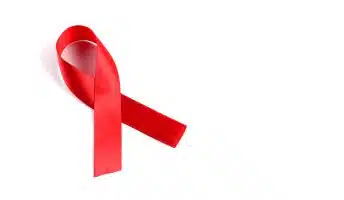
Love in the times of apps.
In the era of social networks and geolocation, there are exponential possibilities for improvised encounters, leading to new STD test growth in sexually transmitted diseases (STDs), AIDS, HIV, Syphilis, and other STIs. Just go to Ask, the kingdom of kids who do courtship rehearsals (often hiding behind anonymity), to understand that blind HPV Test encounters are increasingly frequent. Ask is nothing compared to the now large group of sites and smartphone applications dedicated to hard encounters. These STD platforms offer sexual test appointments, skipping what might once have been a party or disco and favouring an increasingly uninhibited approach to sex.
Do you vote for me? What rating do you give me? Who are you? I know you. You live nearby…See you?
STDs are spreading more and more, not solely because of these 2.0 solutions but also because of the attitude hidden behind this type of approach.
Homo, straight, everyone
«Designed for those who don’t want to waste too much time on small talk and foreplay, getting straight to the point. HPV home kits show that this is how Pure, an app for heterosexuals, introduces itself. The same easy, hasty, and virtually anonymous approach applies to the even more famous Tinder, an iPhone app so widespread among American students that young people declare themselves suffering from “tendinitis”. Then there is Blendr, which is “fast, convenient and discreet” and dedicated to women who take STD risks. Tinder & Co. dispel the myth that the search for easy and immediate sexual encounters belongs only to the gay world. Of course, gay and bisexual apps – such as Grindr, Scruff and Recon – are more popular than ever and Grindr users alone number 6 million spread across 192 countries around the world.
Geolocation
The real revolution of these mobile phone applications lies in the possibility of geolocalization. Just click the “near here” option to have a list of profiles for potential meetings with people close to where you are. From a recent study conducted on a sample of 7,184 attendees of the Gay and Lesbian Center in Los Angeles subject to HPV tests for sexually transmitted diseases, it was found that homosexuals frequenting night clubs or other “brick and mortar” meeting places were less prone to HPV Contagion than those who delegate the first approach to apps.
The results are likely identical if referring to heterosexual encounters. Users of dating apps exhibit a greater propensity for adopting behaviours characterized by poor protection on average. Therefore, sex in the GPS era poses increased risks. It’s worth noting that unprotected sexuality can lead to diseases like HPV, HIV, AIDS, syphilis, chlamydia, and gonorrhoea.
Three hundred million cases
STDs are a growing emergency, both in industrialized and developing countries.
According to World Health Organization estimates, there are annually 333 million cases excluding AIDS and 448 million new cases including AIDS. The number of new HIV infections has remained stable over time, as pointed out by Professor Massimo Andreoni.
Andreoni warns that the level of the guard has been lowered, influencing the transmissibility of AIDS, HIV, and STDs. The data speak of a resurgence of the HPV infection, especially among homosexuals. Initially, they were particularly careful and committed to raising awareness and prevention.
“Today, Experts speak of an average chance of survival for an AIDS patient of ten years less than that of a non-ill person,” insists Andreoni. This is a significant achievement but shouldn’t lead to a negative attitude. STIs, especially AIDS, are now treatable. However, an existence marked by highly toxic drugs is undesirable. In some cases, the government tests for HPV policies risk being counterproductive. People sometimes wrongly think, “What’s the point of being careful if there’s an HPV cure?”
Sites, apps and tools 2.0
The trend of continuous HPV growth is also influenced by test technology, which does not cause but encourages meetings between strangers. Tools that facilitate occasional encounters and created for these purposes. Massimo Andreoni defines them, underlining that the Internet is certainly one of the many components favouring a resurgence in STDs. Data from the latest HPV report from the European Center for Disease Prevention and Control suggests that chlamydia, gonorrhoea and syphilis (exactly in this order) are tested as the three STDs that are on the rise the most in Europe. But in reality, there are also hepatitis and herpes simplex, both underestimated diseases.
The concept of transmitted annoyance also has its weight in transmission, inversely proportional to transmissibility. Those most at risk are young people aged fifteen to twenty-four, regardless of sexual orientation. The majority of new HIV diagnoses are attributable to unprotected sexual intercourse, constituting 80.7 per cent of all reports. The WHO is recording a worrying return of diseases thought to have disappeared. Early reporting is not accompanied by adequate information and awareness. Of the 448 million new cases annually worldwide, 111 million affect children under 25. They lack an acceptable level of awareness and caution beyond technology.
Prevention
The increase in venereal diseases is attributed to cultural changes, including using apps.
There’s a serious HPV information gap and a lowering of guard levels regarding infection. This has influenced the spread of these diseases in general. The key always remains prevention. Technological society provides easier tools for those opting for fast, anonymous sex. However, it doesn’t invest enough in HPV prevention and communication. Protecting oneself is crucial for body health.
Massimo Andreoni emphasizes the need for clear, simple messages without moralism. Awareness is crucial as STDs are often serious, even if curable. The only choice is the use of a condom.
